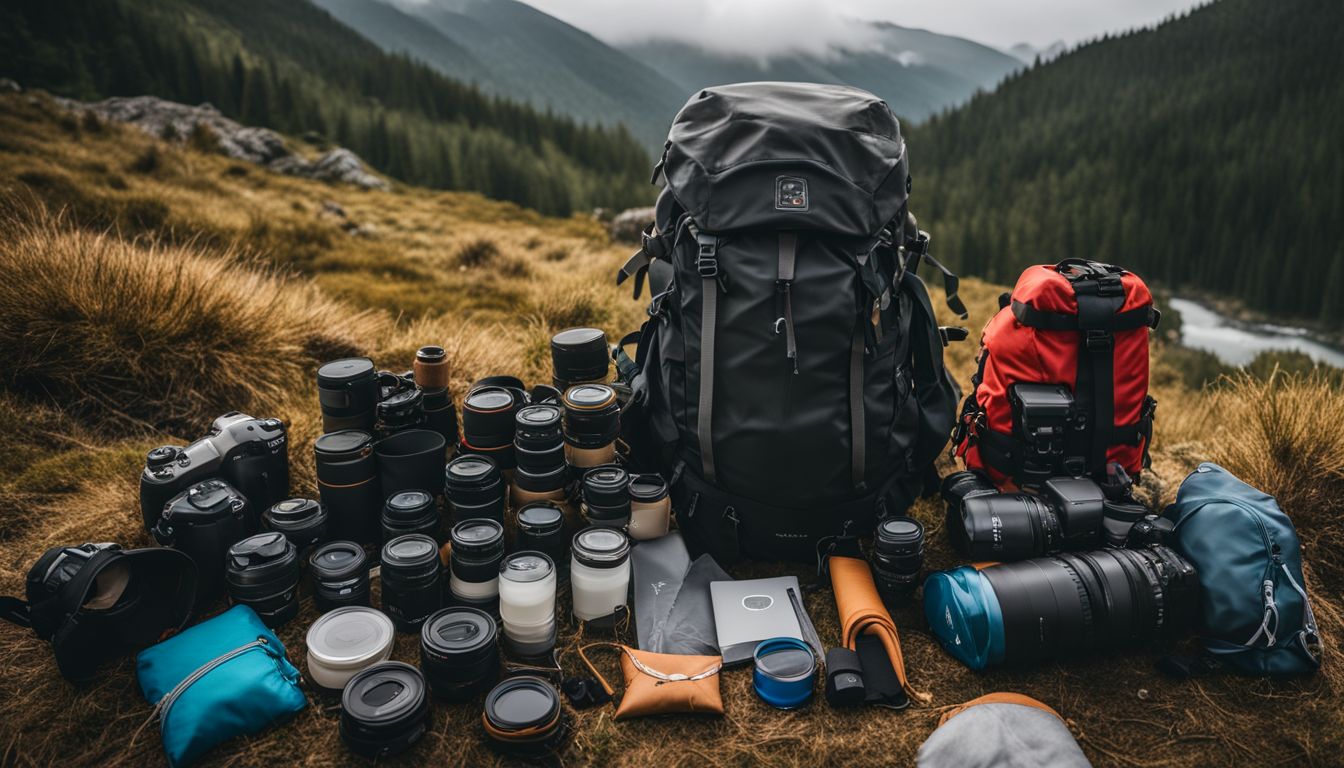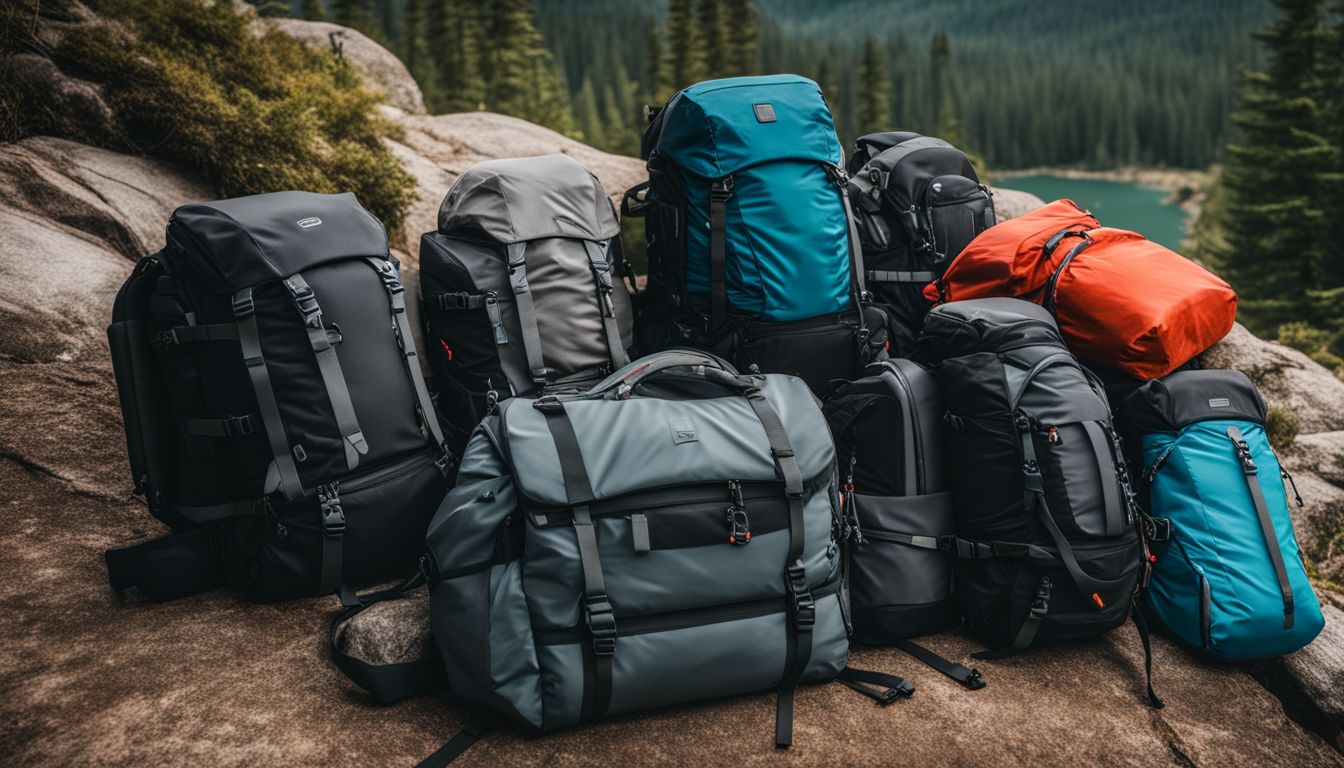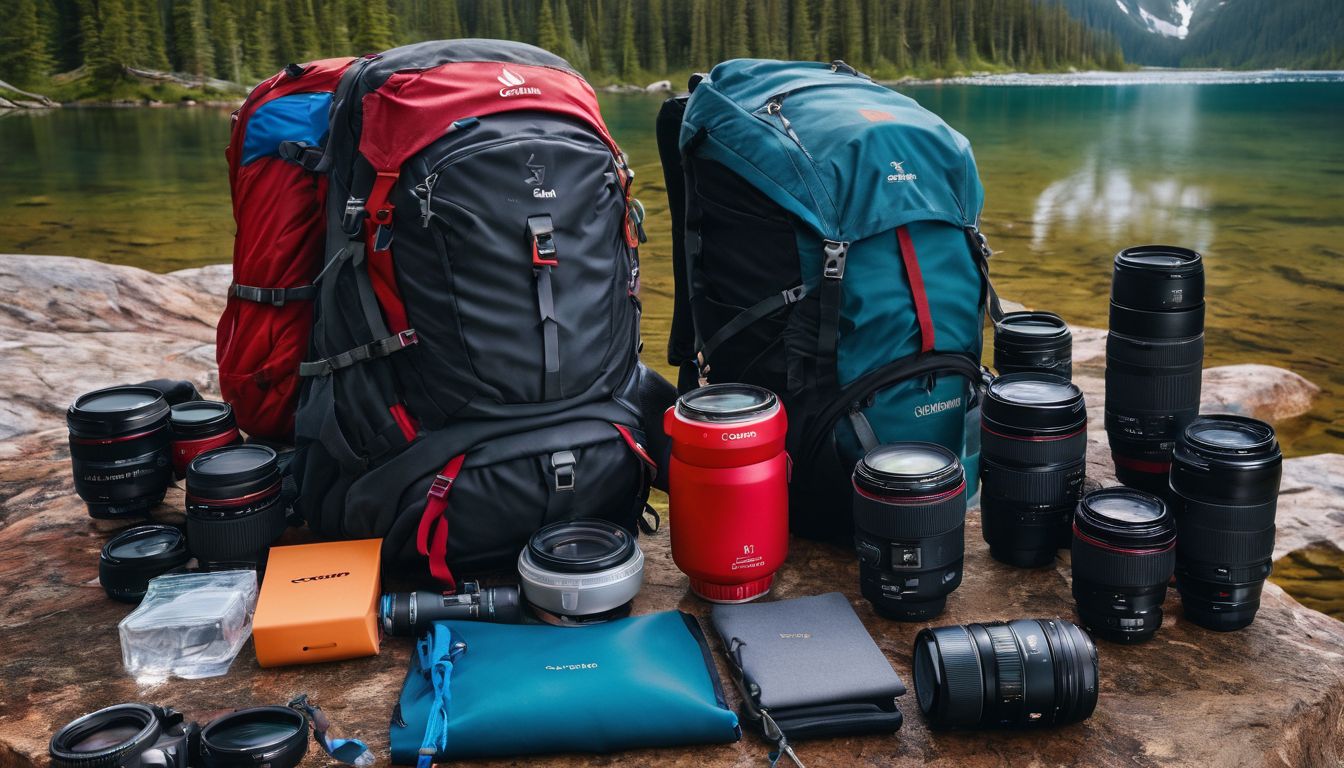Every inch of space in a small rucksack is precious, especially when you’re trying to pack for adventure without feeling weighed down. As someone who has spent years refining the art of packing light and making every square centimeter count, I’ve learned that efficient packing isn’t just about what you take; it’s how you fit it all in.
From treks through the mountains to navigating crowded airports, mastering this skill can turn a cumbersome bag into a streamlined travel companion.
An overloaded or disorganized backpack can not only slow you down but also cause discomfort—a problem easily avoided with some smart packing strategies. With well-chosen gear and thoughtful planning, your carry-on bag can hold everything needed while still zipping comfortably closed.
Keep reading for expert tips that will help transform your packing routine and make each journey smoother and more enjoyable—because travels should be about where you go, not what you carry.
Let’s dive in!
Key Takeaways
- Choose the right rucksack by considering its size, compartments, and weight distribution to ensure it suits your travel needs.
- Utilize packing cubes, compression bags, and strategic rolling of clothes to maximize space in the rucksack while keeping items organized.
- Safeguard electronics by wrapping them in soft clothing for protection, use zip – loc bags for medication storage, and employ footwear strategically to hold small items within the rucksack.
- Prioritize item placement based on frequency of use and designate specific spots for each item within the rucksack to optimize space utilization and maintain organization during travel.
Selecting the Right Rucksack for Your Needs

When choosing a rucksack, consider its size, compartments, and weight distribution to ensure it meets your specific travel needs. The right rucksack can make all the difference in efficient packing and comfortable carrying.
Consider size, compartments, and weight distribution
Picking the right rucksack is like choosing a travel buddy – it needs to fit well and carry your stuff without trouble. Think about how much you’re packing, where it’ll go in the bag, and how it’ll feel on your back. Here’s what to keep in mind:
- Bag size is a big deal for fitting all your things. If it’s too small or too big, packing gets hard.
- Size matters for another reason: smaller bags might be okay as carry-ons on planes. Budget airlines can be strict with sizes.
- Compartments help you organize. They make finding things easier and quicker.
- A backpack should have different sections for different items. For example, one for clothes and one for snacks.
- Think about weight distribution. This means putting heavy stuff where it won’t hurt your back.
- Heavy things should go in the bottom of the pack. It helps with balance while you walk or hike.
- Medium – weight gear goes on top or outside of the pack. This keeps heavy things from squishing lighter stuff.
- Lightweight items like a sleeping bag go in first, at the very bottom.
- A waist belt on a backpack can help spread out the weight so your shoulders don’t get all the pressure.
- For hiking trips, getting the weight right is super important to stay comfy while walking.
Key Packing Strategies for Maximizing Space
 Embrace the art of rolling clothes versus folding, utilize compression bags for bulky items, and organize with packing cubes for easy access. Learn how these strategies can help you maximize space in your rucksack and make packing a breeze!
Embrace the art of rolling clothes versus folding, utilize compression bags for bulky items, and organize with packing cubes for easy access. Learn how these strategies can help you maximize space in your rucksack and make packing a breeze!
Embrace the art of rolling clothes versus folding
Rolling your clothes is like a secret trick for packing. It makes everything smaller and stops wrinkles, so you can put more stuff in your backpack. Picture this: Your shirts and pants all rolled up tight, fitting into every little space in the rucksack.
This way isn’t just about saving room; it also helps keep things neat while you move around.
Next, think about using special bags that make big clothes take up less space. These are called compression bags, and they’re great for things like jackets and sweaters that can fill up a bag fast.
Just put your bulky items inside, squeeze the air out, and see how much flatter everything gets!
Utilize compression bags for bulky items
After you roll your clothes, take the next step with compression bags. They are perfect for squishing down big things like winter coats. These bags get rid of extra air and make clothes much smaller.
That way, you can pack more in your backpack or carry on.
Compression bags aren’t just for clothes; they work great for other big items too. When you press everything down, you’ll have lots of room left in your rucksack or travel gear. This is a smart move if you’re going trekking and need to fit lots of stuff in a small bag!
Organize with packing cubes for easy access
Packing cubes keep things organized and easy to find. Make use of smaller packing cubes for undergarments and socks to maximize space in your rucksack. Compression packing cubes help save space by keeping items compact, clean, and accessible.
They are extremely helpful in keeping your day bag organized while traveling.
Smartly utilizing packing cubes maximizes available space in luggage and keeps everything in order. Well-built packing cubes with easy access help maintain the organization of your bag or suitcase while you travel.
Packing cubes act as portable “drawers,” grouping similar items together for quick access.
Smart Packing Tips for Specific Items
Protect your electronics by wrapping them in soft clothing to prevent damage, and use small zip-loc bags for storing medication and vitamins. Make the most of your footwear by strategically using them to hold smaller items, maximizing space in your rucksack.
Wrap electronics in soft clothing for protection
Protect fragile electronics by wrapping them carefully in soft clothing, like a t-shirt or a sweater. This will act as a cushion to shield them from any impact during your travels and keep them safe from scratches or damage.
Use the clothing as padding around the electronic item to provide extra protection. By doing this, you ensure that your devices are securely nestled within your rucksack and less susceptible to potential harm.
Store medication and vitamins in small zip-loc bags
Storing medication and vitamins in small zip-loc bags can save a significant amount of space in your rucksack. Simply emptying them from their original containers into labeled zip-loc bags not only reduces bulk but also keeps them organized and easily accessible during travel.
Moreover, some travelers use smaller snack-sized zip-lock bags to contain medications, label them with the pharmacy prescription label, and then carry them in a larger zip-lock bag for added security.
Now let’s delve into the strategic packing tips for other specific items that will help maximize every inch of space in your rucksack.
Use footwear strategically to hold small items
Shoes can be utilized as a smart storage space for small items in your rucksack. Store socks, undergarments, or even small electronic gadgets inside the shoes to save space and keep things organized.
This tactic not only maximizes the use of available room in your bag but also ensures that smaller belongings are secured and don’t get mixed up with other items.
Utilize plastic bags to pack shoes and fill them with small items, allowing you to utilize this often overlooked space efficiently. By doing so, you make sure that everything is neatly contained within your shoes while optimizing the limited space in your rucksack.
Packing strategically doesn’t just help maximize space; it also keeps things tidy and easily accessible during travel adventures.
Rucksack Packing for Day Trips
When packing for day trips, it’s important to focus on essentials and efficient space utilization. Here are some practical tips:
- Use lightweight, compact items that serve multiple purposes to minimize weight and maximize space.
- Pack versatile clothing items that can be mixed and matched for different outfits, reducing the need for extra garments.
- Consider collapsible or foldable water bottles to save space when empty.
- Opt for travel – sized toiletries and consider solid versions of products like shampoo and soap to minimize fluid ounces and save space.
- Utilize small zip – lock bags or pouches to organize small items such as chargers, earphones, and snacks.
The Importance of a Packing System
Establishing a packing system is key to maximizing space in your rucksack and staying organized on the go. Learn how to prioritize items and keep everything easily accessible for stress-free travel.
Prioritize items by packing frequency of use
Arrange your items based on how often you’ll need them during your trip. Put the things you’ll use frequently at the top or in easily accessible compartments. Items you won’t need as much can go at the bottom.
When packing, keep in mind that prioritizing items based on necessity and frequency of use is crucial for maximizing space in a small rucksack. This method helps ensure that your most-needed items are readily available while minimizing the time spent rummaging through your bag.
Have a designated place for every item
Prioritize items by packing frequency of use. Once you’ve sorted your essentials based on usage, it’s time to allocate a specific spot for each item in your rucksack. This not only ensures easy access but also prevents rummaging through the entire bag each time you need something.
Utilize the compartments and pockets in your rucksack smartly, assigning them according to the frequency of use for different items. Small zip-loc bags or pouches can be employed to keep smaller accessories together and prevent them from getting lost in the main compartment.
Further, consider utilizing organizer panels within your backpack or investing in additional pouches or cases if needed – this will help maintain order and make packing and unpacking hassle-free while on-the-go.
By allocating designated spaces for every item, you’ll eliminate unnecessary clutter and save precious time when reaching for what you need during travel.
Remember that having a designated place for each item also helps with weight distribution within the rucksack, preventing strain on certain areas of the bag while lightening the load altogether.
Conclusion: Travel Light and Unburdened
In conclusion, maximizing space in a small rucksack is essential for any traveler. The strategies discussed are practical and easy to implement, offering significant improvements in packing efficiency.
Embracing the art of rolling clothes and using compression bags can lead to remarkable space-saving results. Remember, traveling light means unburdening yourself and enjoying your journey with ease and comfort.
So pack smartly, organize efficiently, and experience the freedom of unencumbered travel!
For more insights on how to pack smartly for your adventurous day trips, check out our detailed guide on rucksack packing for day trips.
FAQs
1. How can I fit more things in my small backpack?
Pack smart by rolling your clothes tightly and using every pocket. Put heavy items at the bottom for better weight balance during training walks or hikes.
2. What should I not put in my small rucksack to save space?
Avoid bulky items that don’t fold well, like a large pillow, and choose smaller, multi-use things instead.
3. Can I use my backpack as a pillow when camping?
Yes! Fill it with soft items like clothes to make a comfy headrest when you sleep outside.
4. Is there a special way to pack my bag if I’m going on a weight training hike?
Place heavier gear near the middle of your back inside the backpack for easier carrying during weight-focused hiking trips.

